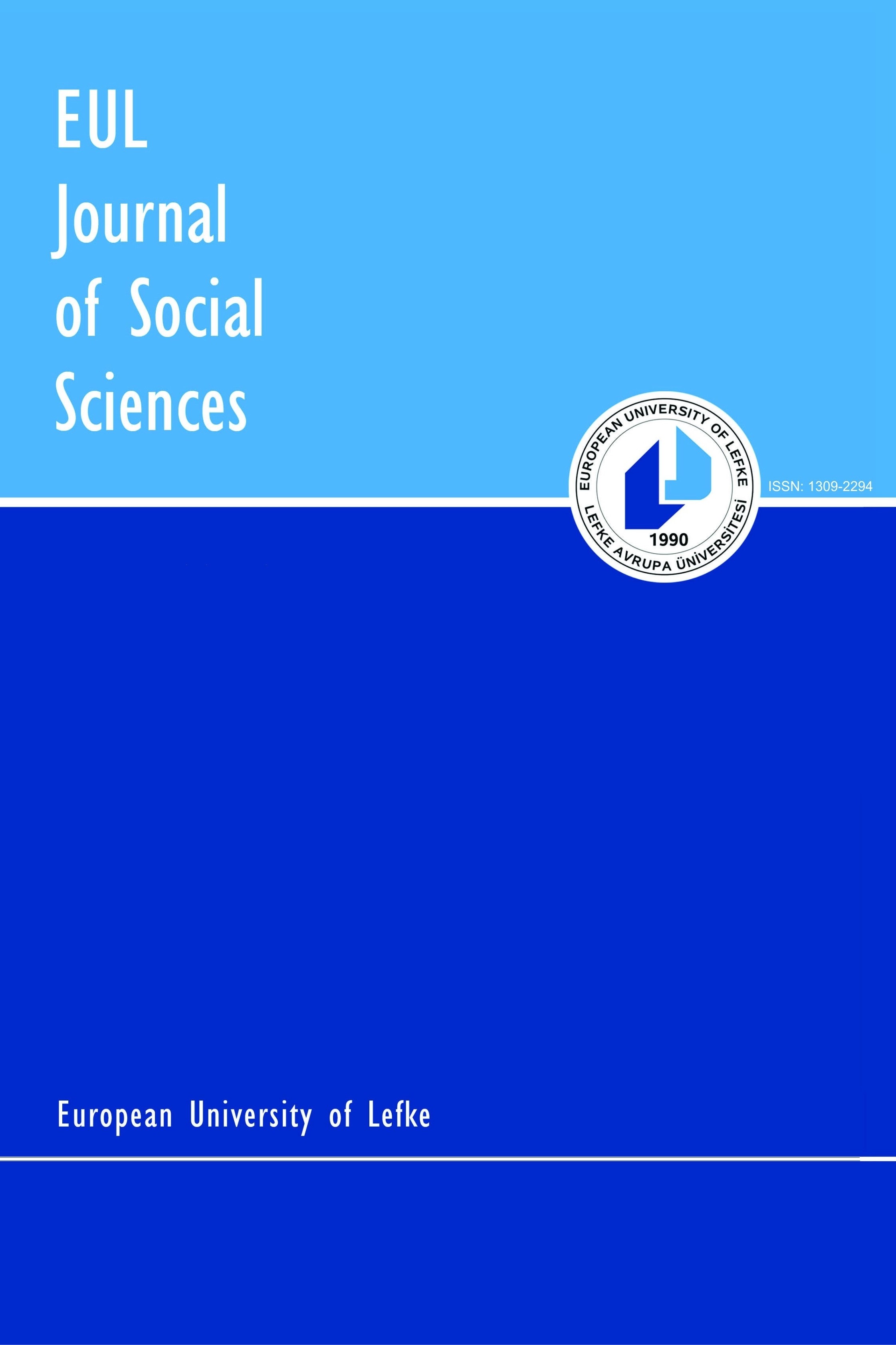The Use of Mother Tongue in EFL Classrooms
Ana dilin kullanımı tartışmaya yol açan bir konudur. Bazı araştırmacılar ana dil yabancı dil sınıflarında kullanılmamalıdır diye iddia ederken, diğerleri ana dilin öğrenme sürecine değerli katkılarda bulunduğunu düşünürler. Bu çalışmanın amacı yabancı dilde eğitim veren sınıflarda ana dilin kullanımında öğretmen ve öğrenci bakış açısının algısını incelemektir. Çalışma 2011-2012 akademik yıllının güz dönemi sonunda Lefke Avrupa Üniversitesinde uygulanılmıştır. Yirmi beş İngilizce öğretmeni ve hazırlık öğrencisi bu çalışmaya katılmıştır. İ ngilizce öğretmenleri ve öğrencilerin algıları arasındaki ilişki öğretmen ve öğrencilere uygulanan anket ve röportaj ile ölçülmüştür. Röportaj beş hazırlık sınıfı öğrencisi ve beş İngilizce öğretmenine yapılmıştır. Bulgular, ana dilin İngilizce öğretimi ve öğreniminde arabulucu bir rol oynadığını ortaya çıkarmıştır. Öğretmen ve öğrenciler görüşleri arasında önemli bir fark yoktur. Öğretmen ve öğrenciler yabancı dil sınıflarında ana dilin kullanımına karşı değillerdir. Onlar ana dilin acil durumlarda kullanılmasını düşünüyorlar. Dahası öğretmen ve öğrenciler ana dilin doğru zamanda ve doğru durumlarda etkili olabileceğine inanıyorlar.
Anahtar Kelimeler:
Ana dil kullanımı (Türkçe), hedef dil (İngilizce), öğretmen ve öğrenci bakış açısı, İngilizce eğitim yapılan sınıflar.
-
The use of the mother tongue in teaching a foreign language is a controversial topic. While some researchers claim that the mother tongue should not be used in foreign language classrooms, others think that it makes a valuable contribution to the learning process.The purpose of this study was to investigate teachers’ and students’ perceptions on using the mother tongue in EFL classrooms and when to use it in the classroom. The present study was conducted at the end of the fall semester of the 2011-2012 academic year at European University of Lefke. Twenty five English instructors and one hundred and five students participated in the study. The relationship between the perceptions on English language instructors and the students was measured through questionnaires given to teachers and students. The interview was carried out with five preparatory students and five English teachers. The data revealed that the mother tongue was a mediating part of language teaching and learning and there was no significant difference between teachers’ and students’ perceptions on using it in language classrooms. Both teachers and students did not oppose the use of mother tongue in language classrooms. They all thought that the mother tongue should be used in emergency situations. Moreover, they believed that it can be effective in the right situations at the right time.
Keywords:
Use of the mother tongue (Turkish), target language (English), teachers’ and students’ perceptions, EFL classrooms.,
___
- Al-Hinai, M. K. (2011), “The Use of the L1 in the Elementary English Language Classroom”, http://www.moe.gov.om/Portal/sitebuilder/sites/ EPS/English/MOE/baproject/Ch2.pdf (accessed 6.6.2012).
- Atkinson, D. (1987), “The mother tongue in the classroom: a neglected resource?”, ELT Journal, 41(4): 241-247, http://eltj.oxfordjournals.org/ content/41/4/241.full.pdf (accessed 6.6.2012).
- Auerbach, E. (1993), “Reexamining English Only in the ESL Classroom”, TESOL Quarterly, 27(1): 1-18, http://www.ncela.gwu.edu/files/rcd/ BE019020/Reexamining_English_Only.pdf (accessed 6.6.2012).
- Butzkamm, W. (2003), “We only learn language once. The role of the mother tongue in FL classrooms: death of dogma”, Language Learning Journal, http://cilt.ittmfl.org.uk/modules/teaching/1a/paper1a4.pdf (accessed 6.6.2012)
- Carless, D. (2008), “Student Use of the Mother Tongue in the task- based classroom”, ELT Journal, 62(4): 331-337.
- Gabrielatos, C. (2001), “L1 Use in ELT: Not a Skeleton, but a Bone of Contention”, Bridges, 6, 33-35 http://www.gabrielatos.com/L1UseInELTBridges.pdf (accessed 6.6.2012).
- Forman, R. (2005), Teaching EFL in Thailand: A bilingual study, Doctoral Dissertation, University of Technology, 435p (unpublished) http://epress.lib.uts.edu.au/dspace/bitstream/handle/2100/552/02whole.pdf; jsessionid=1BF811FDD60F6A53318CE7201B340945?sequence=2 (accessed 6.6.2012).
- Hair, J. F. Jr., Money, A. H., Samouel, P. and Page, M. (2007), Research Methods for Business, John Wiley & Son Ltd.
- Harbord, J. (1992), “The Use of the Mother Tongue in the Classroom”, ELT Journal, 46(4), 350-355.
- Jadallah M., Hasan F. (2011), “A review of Some New Trends in Using L1 in the EFL classroom”, http://www.qou.edu/english/conferences/ firstNationalConference/pdfFiles/drMufeed.pdf (accessed 6.6.2012).
- Jones, H. (2010), “First Language Communication in the Second Language Classroom: A Valuable or Damaging Resource?”, http://nativelanguageuse.weebly.com/uploads/4/0/4/5/4045990/roleofnativ ela nguage.pdf (accessed 6.6.2012).
- Lewis, K. A. B. (2009), “Adult Learners’ Perceptions of the Incorporation of their L1 in Foreign Language Teaching and Learning”, Applied Linguistics, 30(2): 216-235.
- Oflaz, Ö. (2009), Teachers and Students’ Views on Using Mother Tongue in ELT Classrooms (A Case Study at Gaziantep University), A Master’s Thesis, University of Gaziantep, 112, (unpublished) http://www.tez2.yok.gov.tr (accessed 6.6.2012).
- Pan Y., Pan Y. (2010), “The Use of L1 in the Foreign Language Classroom”, Colomb. App. Linguist J, 12(2): 87-96.
- Philipson, R. (1992), Linguistic Imperialism, Oxford: Oxford University Press.
- Prodromou, L. (2001), “From Mother Tongue to Other Tongue”, http://web.archive.org/web/20021119093709/www.thrace-net.gr/bridges/ bridges5/From+Mother+Tongue+to+Other+Tonge.html (accessed 2012).
- ISSN: 1309-2294
- Yayın Aralığı: Yılda 2 Sayı
- Başlangıç: 2010
- Yayıncı: Lefke Avrupa Üniversitesi
Sayıdaki Diğer Makaleler
Erzurum İli Temel ve Destekleyici Turistik Ürün Çeşitlerinin Değerlendirilmesi
Bekir ELMAS, Çetin AKKUŞ, Gülizar CENGİZ
Cinsiyete Göre Bankacılık Sektöründe Hizmet Kalitesi Üzerine Bir Çalışma
The Use of Mother Tongue in EFL Classrooms
Hüseyin MAHMUTOĞLU, Zahide KICIR
Benford Kanunu ve Muhasebe Denetiminde Kullanılabilirliği
Higher Education as a Battlefield: Internalisation and Globalisation as a Cold War
